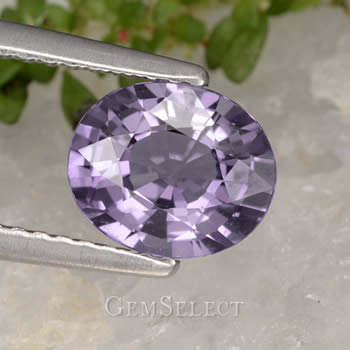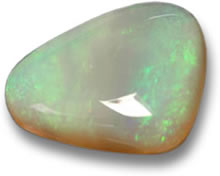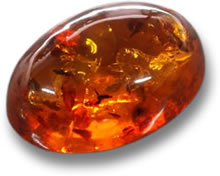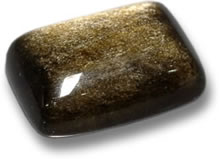|
تمت مراجعته من قبل Andreas Zabczyk
أحجار كريمة انكسارية مفردة مكعب الكريستال الإسبنيل الأحجار الكريمة واحدة من خصائص التوقيع للأحجار الكريمة هي معامل الانكسار . عندما يمر الضوء من وسيط إلى آخر ، تنكسر أشعة الضوء أو تنحني بزاوية. هذا هو السبب في أن القشة التي تقف في كوب من الماء تبدو وكأنها منحنية - فالضوء ينتقل عبر الماء بشكل أبطأ مما ينتقل عبر الهواء. كل مادة لها معامل الانكسار الخاص بها ، وهذا مفيد جدًا تحديد الأحجار الكريمة . يتم التعبير عن معامل الانكسار لمادة معينة على أنه سرعة الضوء في الفراغ مقسومة على سرعة الضوء عبر مادة معينة. في حالة الماء ، يكون معامل الانكسار (RI) 1.33. إلى عن على الماس الأحجار الكريمة ، يقع RI في النطاق من 2.417 إلى 2.419.  الأحجار الكريمة العقيق غير متبلور بعض الأحجار الكريمة هي منفردة انكسارية ؛ لديهم معامل انكسار واحد فقط. الأحجار الكريمة الأخرى - في الواقع ، معظمها - مضاعفة الانكسار ؛ لديهم مؤشرين انكسار مختلفين. عندما يدخل شعاع من الضوء إلى حجر كريم مزدوج الانكسار ، فإنه ينقسم إلى شعاعين ، يسافر كل منهما بسرعة مختلفة وعلى مسار مختلف عبر البلورة. الانكسار هو قياس الفرق بين مؤشري الانكسار في الأحجار الكريمة التي تكون مضاعفة الانكسار ، وتتراوح من 0،003 إلى 0،287. عدد قليل نسبيًا من الأحجار الكريمة هي منفردة انكسارية. أشهرها الماس الأحجار الكريمة و العقيق الأحجار الكريمة و الإسبنيل الأحجار الكريمة . على الرغم من أن الكثير من الناس يعتقدون أن هذه هي الأحجار الكريمة الوحيدة الانكسارية الفردية ، إلا أن القائمة أطول قليلاً ، ويمكن تنظيمها في عدة فئات مختلفة: بلورات مكعبة أحجار كريمة كهرمان طبيعية عضوية المواد الصلبة المكعبة متماثلة ولها ثلاثة محاور متساوية ومتعامدة. لهذا السبب ينكسرون الضوء في جميع الاتجاهات بنفس السرعة. لا تشمل البلورات المكعبة الأحجار الكريمة الماسية والأحجار الكريمة والعقيق وأحجار الإسبنيل فحسب ، بل تشمل أيضًا فلوريت الأحجار الكريمة و بوليت و حجر كريم لازورد و أحجار كريمة سودالايت و الهاكمانايت الأحجار الكريمة و أحجار كريمة بيريت . الذهب والفضة هي أيضا بلورات مكعبة. أحجار كريمة غير متبلورةجميع الأحجار الكريمة غير المتبلورة - ليس لها بنية بلورية محددة - انكسارية منفردة. هناك عدة فئات فرعية من الأحجار الكريمة غير المتبلورة. أحجار العقيق والزجاج الطبيعي والأحجار الكريمة العضوية. كل أعضاء أوبال أحجار كريمة الأسرة - الأحجار الكريمة العقيق المشترك ، الأحجار الكريمة العقيق الثمينة ، النار العقيق الأحجار الكريمة و بولدر أوبال الأحجار الكريمة - تتكون من ثاني أكسيد السيليكون المائي ، وهو نوع من الهلام المتصلب. الأحجار الكريمة العقيق لها محتوى مائي كبير ؛ عادة بين 3 و 10٪.  حجر كريم زجاج سبج طبيعي تشمل النظارات الطبيعية حجر السج و حجر كريم مولدافيت . فهي غير متبلورة لأنها تشكلت في ظل ظروف التبريد السريع ، مما حال دون نمو البلورات. وتشمل الأحجار الكريمة العضوية العنبر الأحجار الكريمة و طائرة نفاثة ، عاج، لؤلؤة الأحجار الكريمة و Ammolite الأحجار الكريمة . أحجار الكهرمان والأحجار الكريمة مشتق من المواد النباتية ، في حين أن العاج والأحجار الكريمة واللؤلؤ والأحجار الكريمة لها مصدرها في مملكة الحيوان. بعض الأحجار الكريمة التي يبدو أن لها مصدر حيواني ، مثل الأحجار الكريمة المرجانية المتحجرة أو الخشب المتحجر ، هي في الواقع بلورية ، حيث تم استبدال المادة العضوية الأصلية بـ يشب الأحجار الكريمة أو عقيق أبيض . هذه الصفحة بلغات أخرى
|
| STAY IN TOUCH | NEWSLETTER |
| *أنت تقوم بالتسجيل لتلقي بريد إلكتروني ترويجي من GemSelect. |
حقوق النشر © 2005-2024 جميع الحقوق محفوظة لـ GemSelect.com.
يُحظر تمامًا الاستنساخ (نص أو رسومات) بدون موافقة كتابية صريحة من GemSelect.com (SETT Company Ltd.).
15953
